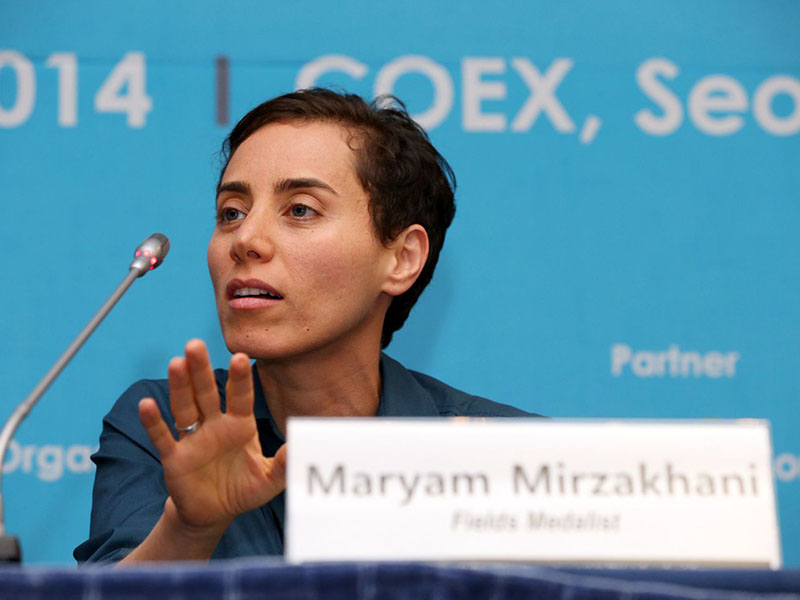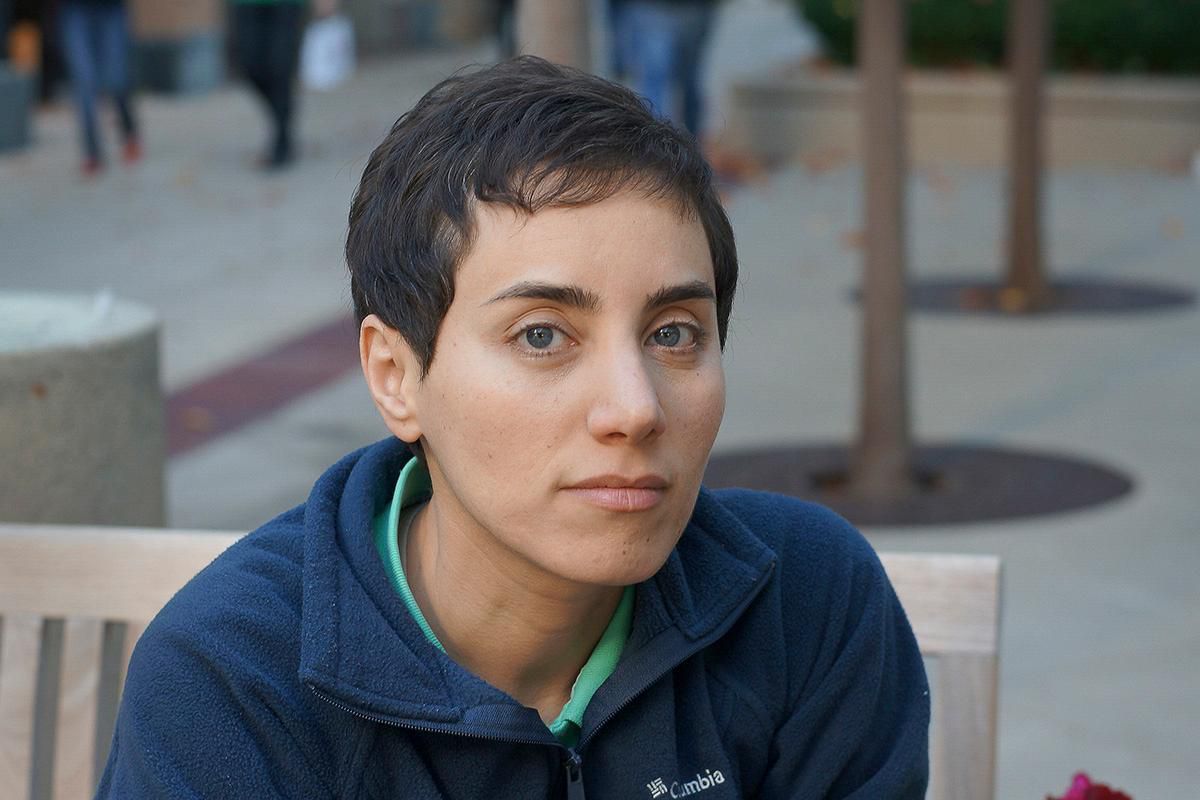
Meet Maryam Mirzakhani, the Iranian Professor of Mathematics
Maryam Mirzakhani, a Stanford mathematics professor who has received the Fields Medal every year since 2014, died on July 14th, 2017. She was the first woman to receive the award. In 2016, she was diagnosed with liver cancer and bone cancer; she had been battling breast cancer since 2013. Stanford Hospital was her final resting place. Mirzakhani was 40 when she died after a long battle with cancer.
Background

Born in 1977 in Tehran, Iran, Mirzakhani, “The Iranian professor of Mathematics,“ considered herself fortunate to have grown up after the Iran-Iraq war. That was the time when the political, social, and economic environment had stabilized enough for her to focus on her studies. Mathematics eventually swept her away from her dream of becoming a writer.
In Tehran, she attended an all-girls high school. Although no girl had ever competed for the Iran team in the International Mathematical Olympiad, her principal was adamant that she would. First recognized internationally in 1994 and 1995, Mirzakhani won one award at each show. She won a gold medal in 1994. A year later, she earned a perfect score and a gold medal once again.
When she graduated from Sharif University in Tehran, Curtis McMullen, a Fields Medal winner and fellow Boston University professor, guided her through graduate school at Harvard University. Despite a language barrier, Mirzakhani was known for her perseverance and relentless questioning at Harvard. As she snatched notes in Farsi, she peppered her professors with questions in English.
What Others Say About Maryam Mirzakhani

Mirzakhani is a hard-working person filled with fearless ambition. Her dissertation of 2004 is a masterpiece; McMullen described her as "stunning.” It was a long-awaited solution to two long-standing problems. Mirzakhani's connection between the two is described as "truly spectacular" by Benson Farb, a mathematician at the University of Chicago. The solution on its own would have been intriguing, but in combination, both could have made headlines. Several papers in the top three mathematics journals were published as a result of the project.
"Most mathematicians will never come up with something as good," Farb said at the time. “And this is what she did in her thesis.”
It is with great regret that we recognize Maryam has left us, but her impact will live on for decades to follow through on the thousands of women she inspired to study math and science," said Stanford President Marc Tessier-Lavigne. “Her talent as a theorist resulted in several honors, including the Nobel Prize, but Maryam also accepted all honors with the hope that it would inspire others to follow her example. It is heartbreaking to hear that she died after such a remarkable career as a scholar and role model. She will be greatly missed by Stanford and the world at large.”
The Iranian leader said that This creative scientist made Iran's name resound in the world's scientific forums, and Iran's youth showed their great desire to reach the top, as Iran came upon the world stage on various occasions.
"What's so special about Maryam, what sets her apart, is the originality with which she brings together these disparate parts," Steven Kerckhoff said at the time of her Fields Medal award. Professor Kerckhoff is a mathematician at Stanford who works in the same field. “This was the case from the very beginning with her thesis work, which led to several publications in prestigious journals. This was a real tour de force due to the novelty of her approach.”
Mirzakhani obtained her doctorate from Harvard and held positions as an assistant professor and research fellow at Princeton University before joining Stanford's faculty.
According to Stanford's Barbara Kimball Browning Professor of Mathematics, Ralph L. Cohen, Maryam was a remarkable colleague. “She was not only an outstanding researcher and fearless teacher, but also an outstanding Ph.D. adviser as well. Maryam represented what it means to be a mathematician or scientist: to strive to solve a problem that hasn't been solved before or to figure something out that hasn't been figured out before. Every success is fueled by a deep intellectual curiosity, and there is great joy and satisfaction in every little step forward. It was a great privilege to know Maryam, one of the greatest minds of our time. There will be a great void in her absence.”
Her work with Alex Eskin at the University of Chicago has helped solve a challenging mathematical problem that physicists have struggled with for a century: the trajectory of a billiard ball around a polygonal table. After further investigation of this seemingly simple phenomenon, a 200-page paper was published in 2013 and was hailed as "a titanic work" and "the beginning of a new era" in mathematics.
The philosopher would reply,
"You're torturing yourself on the way, but it's not meant to be that way."
Maryam Mirzakhani's Work Experiences

Often considered the equivalent of the Nobel Prize in mathematics, the Fields Medal, which Mirzakhani won in 2014, is the most prestigious award in the mathematics field. Theoretical mathematics that MaryamMirzakhani specialized in reads like another language to those not trained in mathematics: moduli spaces, Teichmüller theory, hyperbolic geometry, Ergodic theory, and symplectic geometry.
The amount of detail she can capture in the semi-rudimentary shapes of spheres, doughnuts, and even amoebas was enabled by mastering these ideas and pursuing her fascination for describing the geometric and dynamic complexities of curved surfaces. Through her research was largely theoretical, it had implications in understanding how the universe began, as well as having applications to engineering and material science from the quantum field theory that she developed. The study of prime numbers and cryptography are affected by it in mathematics.
As a professor of mathematics at Stanford University from 200, Mirzakhani served as a member of the faculty until her death.
Although she worked on a wide range of issues, Mirzakhani said she enjoyed pure mathematics because the questions she studied were elegant and continued for many years.
Despite her self-professed slowness, Mirzakhani's colleagues praise her for her ambition, resoluteness, and fearlessness when faced with problems others would otherwise deem insurmountable. The easier path was out of her reach, so she chose to deal with more difficult issues instead. In order to solve problems, she would doodle on large sheets of white paper, scribbling formulas around the edges of her drawings. Her young daughter described the work of her mother as "painting."
During an interview, she stated: "I don't have any special way of developing new proofs. … Trying to come up with new tricks while being lost in a jungle is like trying to find a way out by utilizing the knowledge you've gathered.”
As well as her parents, two siblings, and husband, Mirzakhani also leaves behind a daughter, Anahita, and two brothers and sisters.






Leave a Reply
Your email address will not be published. Required fields are marked *
All Comments (0)